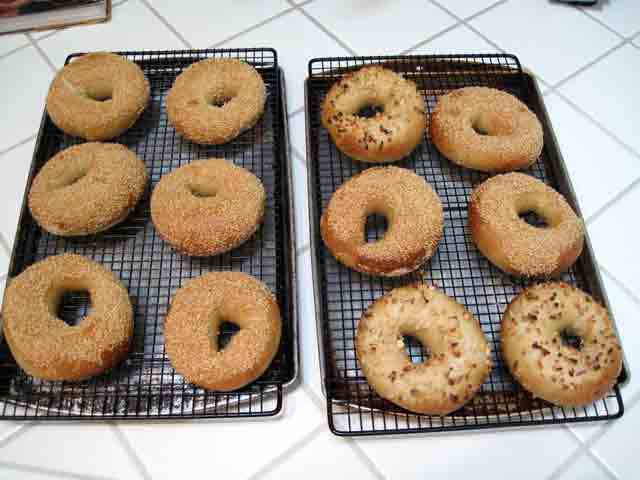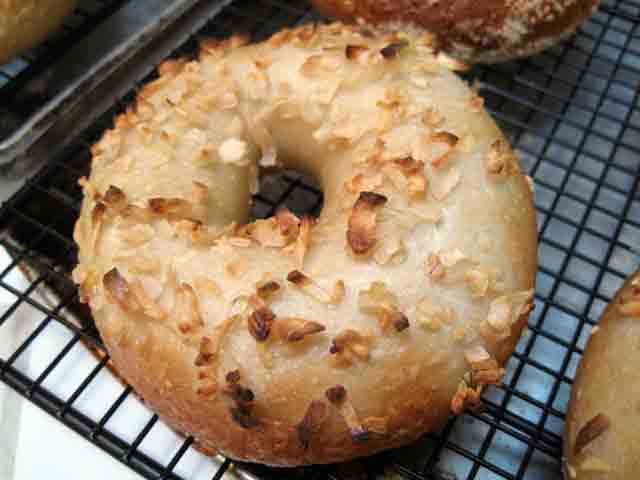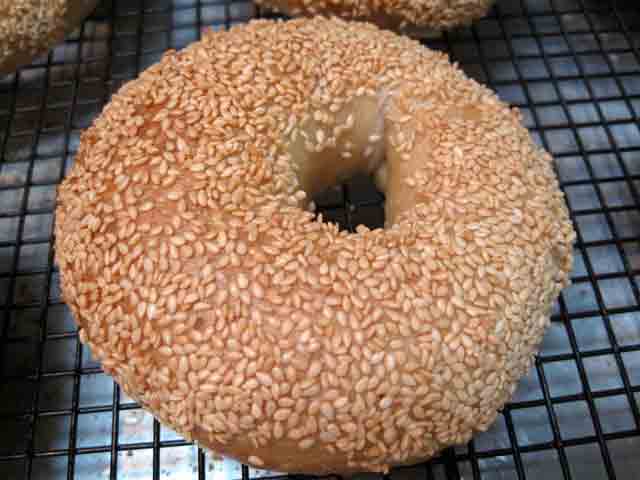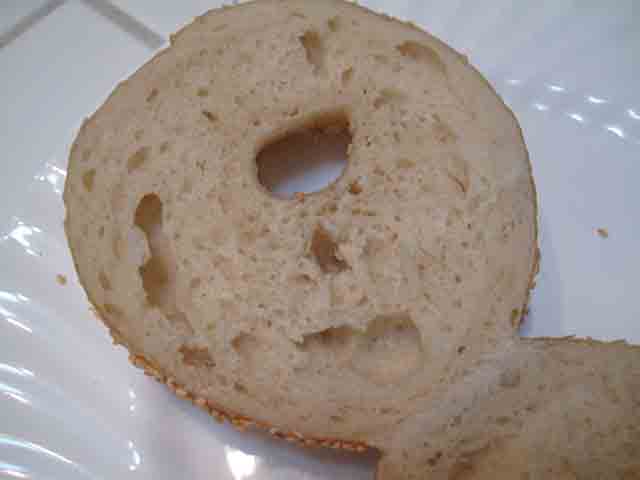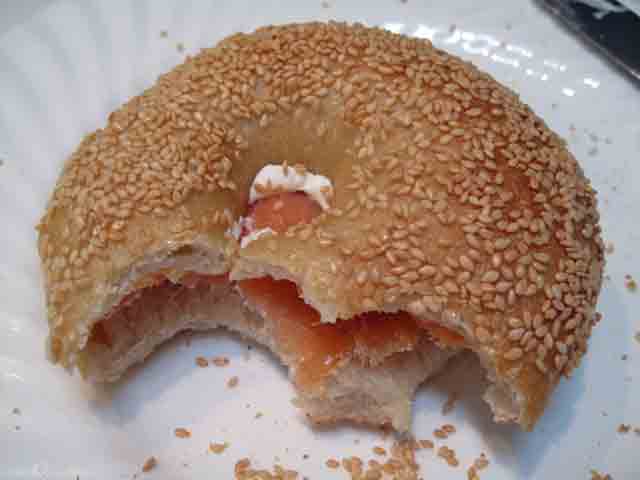
Back in March my wife sent me to a food blog to read about the "Best Pizza Dough Ever Recipe." In the post, Heidi Swanson gives some background to her discovery of Peter Reinhart's Neapolitano pizza dough along with an adapted version of the recipe from The Bread Baker's Apprentice. It seemed a bit detailed, but it sounded good and a few days later I gave it a go.
I'll admit I had a rough time of it. It was my first time working with wet dough—to date I'd only made some quick breads and some rather disappointing bread sticks, and this was a whole different beast. The first pizza went everywhere. The second was little better. Did I mention the smell of carbonized semolina flour? Altogether the pizzas were a mess, but they were still good enough that it showed promise, and it got me interested in checking out Reinhart's books.
Ten days later my wife surprised me with copies of The Bread Baker's Apprentice and American Pie. I switched to the AP Neapolitano dough and I've now made the pizzas 3 times. It's the best pizza I've ever had. Our favorite pizza so far is the Pizza Rosa al Bianco.
In the same time, I've been exploring a variety of bread recipes from BBA. For myself, the European style breads, and for my wife a variety of sandwich loaves. But one of the formulas has overshadowed all the others. First I made bagels for us. My entire family raved. Then I made bagels for my wife's co-workers. And then my mom wanted some for her school. I have been making between 2–3 dozen bagels per week for the last month or two. And thanks to some snooping around the forums here, my bagels have consistently gotten better with each batch. I have to admit it does feed my ego when people constantly tell me that my bagels are better than anything in town and that I should open up a shop. Most of the bagels I've had around here don't even begin to compete with these. Panera comes closest, but there are a few people insisting that these are better yet. I agree that they're good, but I'm still hunting for the perfect bagel.
In the meantime, I'm very proud of these and love making them with a couple tweaks to Mr. Reinhart's formula. The few changes I make are as follows:
- Liberally add more flour—I need to measure this, because I'm consistently adding more flour as the dough seems fairly wet
- Toss the proof times out the window—since I have to hand kneed 1-2 batches at a time, the bagels are often ready to be retarded just as soon as I have them shaped
- Increase baking soda to 1/4 cup per pot of water—1 tbsp wasn't sufficiently gelatinizing the outer dough
- Add malt syrup to the water until the water is tea colored (with thanks to those who have posted Jeffrey Hamelman's techniques)—without the malt, the bagels come out of the oven very pale
I've also experimented with some different toppings. I liked the ginger, garlic, sesame bagels I turned out, but my wife wasn't a fan of the ginger zing. The favorite topping, by far, has been my adaptation of the Pizza Rosa al Bianco from American Pie. I mince the red onion—is there any reason why everyone seems to use rehydrated onion for bagels?—and chop the pistachio nuts and rosemary smaller than I would for the pizzas. It still gets a huge heap of parmigiano reggiano and gets spritzed with olive oil before going into the oven.
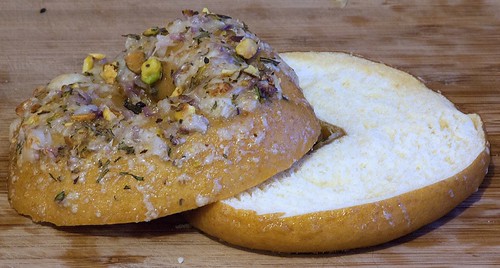
There are still a few things I'd like to figure out. No matter what I do, the bagels don't have the texture I expect—the inside isn't quite a chewy as I think they should be, and I've tried using KA Sir Lancelot HG flour as well as boiling longer. The crust is also surprisingly soft. Chewy, yes, but shouldn't the crust have a crispness about them?
Regardless, these bagels are certainly satisfying. Everyone from my 2 year old daughter to my recently-vegan parents begs for them. And this makes me very, very happy.






